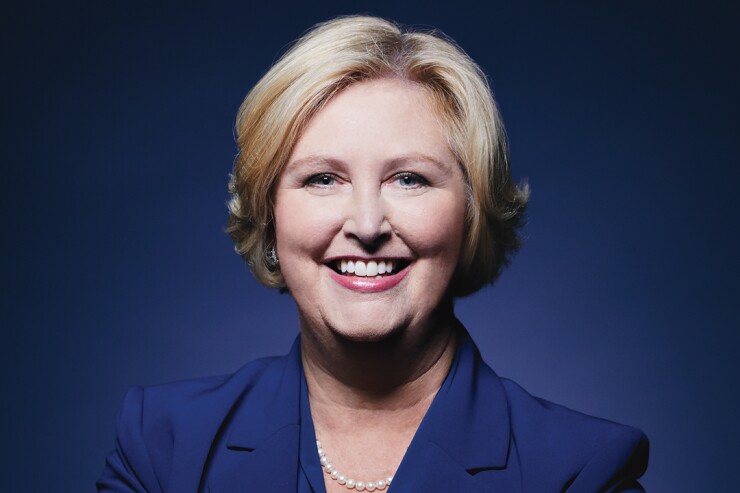- Key insight: Embedded payments have grown in recent years.
- Look forward: It's a goal that's existed for years, inspired by ride-sharing apps like
Uber that allow customers to book and pay for rides without checking out. - What's at stake: The technology that enables "invisible payments" is
dramatically improving , creating a race among banks to get on board.
The future of payments and finance depends on making transactions automatic, easy and almost out of sight.
It's a goal that's existed for years, inspired by ride-sharing apps like
"Payments are a commodity, and customers choose who and how to interact based on ease of the experience," according to Tessa Naroditsky, senior vice president and director of payments strategy for commercial banking at
What's going on?
Embedded payments can mean several things, but it usually refers to placing payments inside external services such as apps and websites. Consumers select a method and pay through a link enabling a single-click checkout, avoiding cumbersome steps such as adding card information and other credentials on a checkout page. Embedded finance is adding banking and other financial products in apps or sites for nonfinancial companies, such as accessing a card via a streaming content service.
"The U.S. is one of the most mature markets in the world when it comes to data sharing," Kieran Hines, principal banking analyst at Celent, told American Banker, noting the U.S. does not have an open banking law, or regulation
What banks are doing
The bank is also adding technology to power real-time payments, using instant settlement rails such as FedNow and The Clearing House's RTP network to schedule payments for a specific time, and to include more data and actionable details from payments.

"To continue to grow and participate in the global payments conversation, banks need to invest in understanding and developing simple user experiences that meet customers where they are at and solve real customer problems," Naroditsky said. That includes bringing payment capabilities directly into nonbank experiences and partnering in new ways with customers.
"This kind of embedded capability meets customer preferences exactly where they are and makes flexible payments part of their everyday experience," Habner said.
The demand
Research suggests embedded payments are becoming a vital strategy for banks. The global embedded payments market is expected to expand by 134% between the end of 2024 and 2028, with embedded account-to-account payments and digital wallet payments being the primary payment types, according to Juniper Research. KPMG reports 58% of banks said embedded finance is a priority in the next year, with 75% naming open banking, or data-sharing technology that supports embedded payments, as a priority.

Banks are also acquiring fintechs to bolster their open banking and embedded finance strategies. In 2023, Fifth Third acquired Rize Money, a fintech that has helped the bank launch Newline, which offers embedded payments. Newline has partnered with payment firms such as Stripe, Trustly, Brex and Nuvei.
Newline lets these clients integrate financial products and services via application programming interface or file transfer. These include payment processing capabilities, bank account creation and card issuance. "Embedded finance is part of banking today and we're not just embracing it, we're building it into our tech stack, our relationships and our role as a leader in the financial landscape," said Bridgit Chayt, executive vice president and head of commercial payments and treasury management at Fifth Third Bank.






